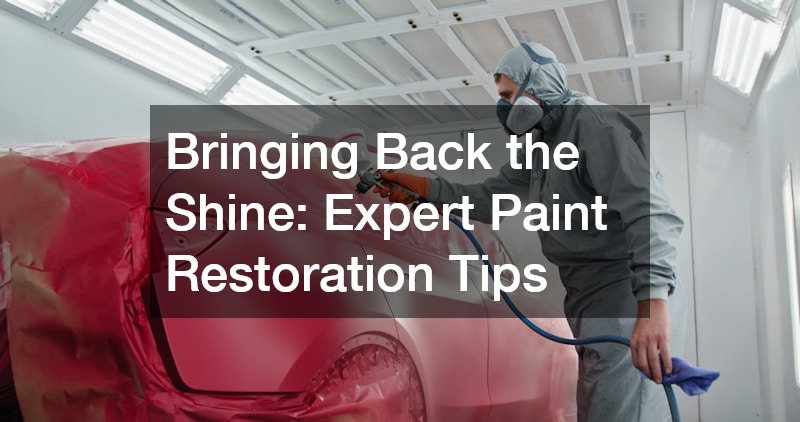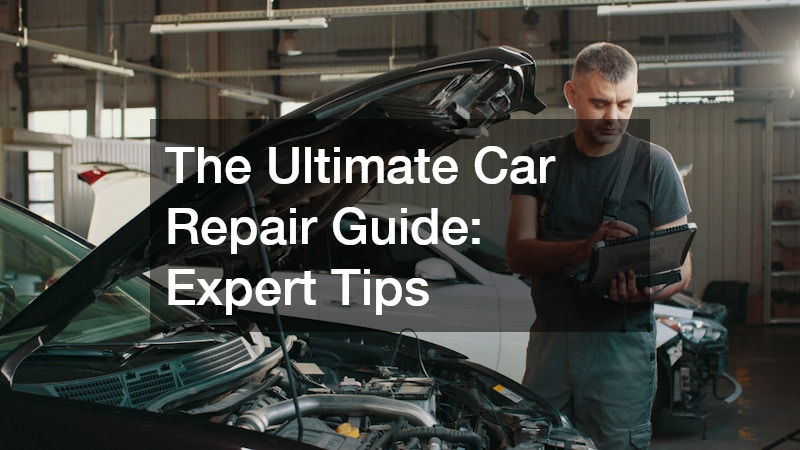Introduction
Every year, Americans spend more than $600 billion on vehicle maintenance and repairs, according to the Auto Care Association. This staggering amount underscores how crucial proper care is for prolonging vehicle lifespan, enhancing performance, and reducing unexpected repair costs. Vehicles are significant investments, and informed owners can prevent minor issues from escalating into expensive repairs through regular maintenance and strategic DIY practices.
The popularity of DIY car repair has surged in recent years. The AAA 2024 Consumer Study reports that nearly 70% of U.S. car owners perform at least minor maintenance or repair tasks themselves, ranging from oil changes to basic diagnostics. The appeal is clear: cost savings, gaining mechanical knowledge, and the satisfaction of hands-on vehicle care. However, without proper guidance, even small mistakes can lead to significant safety hazards or increased repair bills. For instance, the CarMD 2024 Vehicle Health Index shows that DIY errors cost the average American $1,250 per incident, highlighting the importance of careful, informed repair efforts.
Vehicle maintenance goes beyond fixing broken parts. Understanding early warning signs, choosing quality parts, and knowing when to seek professional help are essential skills for every car owner. From performing basic fluid checks and brake inspections to monitoring tire health and scheduling timely diagnostics, a proactive approach can save time, money, and stress. Proper preventive measures not only maintain the vehicle’s reliability but also ensure driver safety on busy roads.
Professional and authoritative resources like the NHTSA Car Maintenance Guide and the AAA Car Care Research Center provide detailed insights and step-by-step recommendations for effective vehicle upkeep. Leveraging these resources can help car owners navigate complex repair situations confidently, whether tackling minor repairs themselves or knowing when to consult certified technicians.
This comprehensive car repair guide is designed specifically for U.S. car owners, covering ten essential areas of maintenance and repair. Topics include emergency handling, tire care, brake systems, diagnostics, paint restoration, body repairs, roadside assistance, and even classic car restoration. Each section offers actionable tips, practical advice, and safety considerations, ensuring that both new and experienced car owners are equipped with the knowledge needed to keep their vehicles safe, efficient, and reliable year-round.
By following this guide, vehicle owners can minimize costly mistakes, maximize the life and performance of their cars, and enjoy the confidence that comes with understanding and managing their vehicles effectively.
Repairing Hail Damage Effectively
Hailstorms can cause significant cosmetic and structural damage to vehicles, ranging from small dents on the hood and roof to cracked glass or chipped paint. Hail damage not only affects the aesthetic appeal of your car but can also lower its resale value and, in severe cases, compromise structural integrity. Understanding how to address hail damage promptly is essential for every U.S. car owner.
The first step in effective auto hail damage repair is to conduct a thorough assessment of the damage. Walk around your vehicle in good lighting and document all dents, scratches, or chipped paint. Taking detailed photographs can help when filing insurance claims and communicating with repair professionals. Minor dents can sometimes be addressed with DIY paintless dent repair (PDR) kits, but larger or strategically placed dents may require professional intervention.
Insurance coverage is another critical consideration. Most comprehensive auto insurance policies cover hail damage, so contacting your provider promptly after a storm can expedite repairs. Many insurance companies recommend approved auto body shops for repairs, ensuring high-quality restoration while minimizing out-of-pocket costs.
For DIY enthusiasts looking to repair small hail dents themselves, the key is proper tools and techniques. Paintless dent removal involves using specialized rods, glue pullers, or suction devices to massage dents from the interior or exterior panels without affecting the original paint. However, attempting this without guidance can lead to paint cracking or uneven surfaces, so reviewing tutorial videos or professional manuals is advised.
Preventive measures can also reduce hail damage impact. Parking in covered garages, using car covers during storms, and investing in temporary hail protection mats can help protect the vehicle. Even simple precautions, such as relocating your car away from open areas during hail forecasts, can prevent expensive repairs.
After repairs, it’s important to inspect the vehicle for hidden issues. Hail can sometimes loosen seals, affect window alignment, or cause minor scratches that later lead to rust. Regular maintenance and inspections post-repair ensure that any hidden damage is addressed promptly, maintaining both appearance and structural integrity.
By combining careful assessment, proper DIY techniques, insurance guidance, and preventive measures, U.S. car owners can tackle hail damage effectively, restore vehicle value, and avoid future complications. For professional guidance, resources like the NHTSA Car Maintenance Guide and certified auto body shops are invaluable in ensuring high-quality, lasting repairs.
Handling Unexpected Breakdowns with Confidence

Dealing with unexpected car breakdowns can be daunting, making reliable emergency services crucial. The availability of 24-hour auto towing has become an essential part of ensuring vehicle and personal safety. Having a contingency plan not only reduces stress but also provides quick solutions when you find yourself stranded on the road.
Preparation is key to handling breakdowns with confidence. Having an adequately stocked road kit, knowing crucial emergency numbers, and understanding safety positioning can make all the difference in a serious situation. A well-prepared vehicle owner can address minor issues immediately, minimizing potential risks while waiting for professional help.
Always keep at least two 24 hour auto towing services saved in your phone. Additionally, verify your insurance coverage for towing services. This proactive approach ensures you won’t be caught off guard, especially during long-distance travel, when navigating towing distance and coverage zones can be challenging.
Keeping Your Tires in Top Shape for Every Journey
Car tires play a critical role in ensuring safety and efficiency during travel. Regular tire inspections, rotations, and balancing are crucial to maintaining tire health and extending their lifespan. Properly maintained tires significantly contribute to vehicle stability and safety.
Recognizing signs of wear and uneven tread prevents potential accidents. An evenly worn set of tires optimizes fuel efficiency and ensures a safer driving experience. Underinflation is another significant issue, often leading to increased fuel consumption and reduced tire life.
Using simple methods like the “penny test” monthly to check tread depth ensures that your tires are up to standard. Moreover, rotating your tires every 5,000–7,000 miles helps maintain uniform wear, which is vital for optimal performance. Quality car tires not only improve fuel efficiency but also ensure safer, smoother journeys.
Bringing Back the Shine: Expert Paint Restoration Tips

A vehicle’s aesthetic appeal largely depends on the condition of its paintwork. Auto painting demands proper surface preparation, as this sets the foundation for a durable finish. Proper surface prep before painting is essential to ensure the new coat adheres well and lasts longer.
Color matching and applying a clear coat are crucial to achieving a seamless and professional finish. Additionally, understanding UV protection can protect the paint job from weather-related damage, ensuring the vehicle retains its shine for a more extended period.
Before a full application, it’s wise to test spray on a small area. This prevents unforeseen issues with paint adhesion or color mismatches. Wearing protective gear during painting is essential to avoid any chemical exposure, which can pose health risks if safety guidelines aren’t followed.
Finding Trustworthy Repair Centers Near You
Selecting the right auto body shop significantly impacts the quality and reliability of car repair services. Factors like certifications, customer reviews, warranties, and turnaround times are crucial considerations. Auto body shops with strong reputations and credentials assure you of professional service and dependable repairs.
Choosing a body shop that is I-CAR Gold Class certified guarantees your vehicle is in expert hands. This certification reflects the shop’s commitment to undergoing continuous training, ensuring that technicians stay up-to-date with the latest vehicle repair methods. Such attention to detail minimizes the risk of recurrent issues.
While many shops can handle repairs for both domestic and foreign vehicles, it is essential to check an auto body’s experience and specialization. Different vehicles have specific repair requirements, and an informed choice ensures quality and satisfaction.
Diagnosing Vehicle Issues Like a Pro
Auto diagnostics plays a pivotal role in preemptive maintenance. The use of OBD-II scanners provides early fault detection, allowing vehicle owners to address issues before they escalate. Regular diagnostics enhances vehicle performance and can save substantial repair costs in the long run by identifying minor problems early.
Understanding and reading common engine error codes empowers vehicle owners to undertake small repairs themselves. Knowledge of what these codes indicate helps in deciding whether professional intervention is needed, promoting confidence in DIY repair scenarios.
Investing in a Bluetooth auto diagnostics tool compatible with your vehicle’s make and model is a worthwhile step. These tools, available at various price points, provide valuable insights into your vehicle’s health. An informed approach to diagnostics ensures your vehicle remains in top condition.
Mastering Brake Maintenance and Safety
Brake repair is one of the most critical aspects of vehicle maintenance. Identifying signs of brake wear, such as squealing, vibrations, or pulling, can prevent potential hazards on the road. Regular maintenance significantly enhances safety and ensures optimal braking performance.
Knowing when to replace brake pads, rotors, or fluid is crucial for vehicle safety. Prompt replacements prevent further mechanical damage and ensure that the vehicle responds appropriately during emergencies. Keeping brakes in optimal condition is a fundamental aspect of vehicle safety.
Regularly checking the brake fluid color every 10,000 miles and bleeding lines annually ensures the braking system functions efficiently. Professional inspection is recommended for ABS or hydraulic issues to maintain the vehicle’s safety integrity and ensure comprehensive safety measures are intact.
Staying Safe During Emergencies on the Road
Having a reliable roadside assistance plan is a necessity for every vehicle owner. These services ensure help is readily available in emergency situations, providing peace of mind and reducing risks associated with roadside breakdowns.
Common services offered include jump-starts, tire changes, fuel delivery, and lockout help. Professional assistance for these issues ensures quick resolutions, minimizing time spent in dangerous situations or inclement weather.
Providers offering nationwide coverage and real-time tracking enhance the reliability of roadside assistance services. Ensuring you are equipped with reliable service options prevents unnecessary stress and guarantees help reaches you swiftly.
Repairing Exterior Damage the Right Way
Different types of exterior damage require specific repair approaches. Understanding the distinction between cosmetic and structural damage aids in determining the necessary repair path. Appropriately addressing damage prevents further issues and maintains vehicle safety.
For small dents, using DIY repair kits can be a cost-effective solution. However, collision or frame damage necessitates consultation with certified auto body repairs specialists. Their expertise ensures thorough repairs, particularly when dealing with complex damage.
Sanding, priming, and repainting essentials must be understood to achieve a seamless repair finish. Precision in these areas prevents future paint adhesion issues and ensures the vehicle’s exterior remains aesthetically pleasing and protected.
Choosing the Best Tires for Your Vehicle Type
Selecting the right tires is crucial for vehicle performance and safety. Different types of tires such as all-season, performance, off-road, and winter tires serve specific purposes and vehicle types. Understanding your vehicle’s requirements ensures optimal performance and fuel efficiency.
Replacing new car tires every six years regardless of tread integrity, especially if the rubber starts cracking, is crucial. This prevents unexpected failures that could lead to dangerous situations, emphasizing the importance of regular inspections.
The tire pressure monitoring system (TPMS) plays a vital role in maintaining correct tire pressure. Consistent monitoring prevents underinflation, ensuring increased safety and fuel efficiency on the road.
Preserving Vintage Beauty and Performance

Classic car repair requires meticulous attention to detail. Using original or OEM-compatible parts is essential to maintain the authenticity and functionality of vintage vehicles. This approach ensures these timeless vehicles continue to perform reliably and maintain their value.
Keeping detailed maintenance logs and documenting restoration progress with photos assists in maintaining a detailed history. This simple step enhances the understanding of your vehicle’s evolution and repairs at a glance, promoting efficient management of the restoration process.
Specialist classic car repair shops offer expert services such as paint matching, upholstery care, and carburetor tuning. Searching for these focused services helps ensure that your classic car maintains both its vintage charm and optimal performance.
Conclusion
Proactive and informed vehicle maintenance is essential for every U.S. car owner. Regular upkeep not only prevents unexpected breakdowns but also significantly reduces long-term repair costs. According to the Auto Care Association, Americans can save up to 25% annually on maintenance expenses by addressing minor issues promptly and implementing preventive care. This highlights the importance of a structured approach to vehicle repair and maintenance, whether performed at home or with professional guidance.
DIY car repair can be both satisfying and cost-effective when executed correctly. Using quality parts, following manufacturer guidelines, and leveraging modern diagnostic tools ensure that repairs are safe, reliable, and long-lasting. Yet, even experienced DIY mechanics must recognize their limits and know when to consult certified professionals. Services like 24-hour towing, certified auto body shops, and roadside assistance programs provide safety nets for unexpected failures, ensuring drivers remain secure while minimizing further damage.
Preventive strategies, including routine tire checks, brake inspections, fluid replacements, and scheduled diagnostics, form the foundation of a robust vehicle care routine. Tire safety, for example, is critical; tire manufacturers recommend rotating tires every 5,000–7,000 miles and replacing tires older than six years to prevent accidents. Similarly, maintaining brake systems and fluid levels ensures optimum performance and helps avoid costly emergency repairs.
Classic car owners and enthusiasts should pay particular attention to restoration practices, using OEM or compatible parts, documenting maintenance history, and consulting specialists for bodywork, paint, and engine repairs. These steps preserve authenticity and performance while maximizing the long-term value of vintage vehicles.
For ongoing guidance and best practices, car owners can rely on high-authority resources such as the NAPA Know How Blog, YourMechanic Maintenance Advice, and the Consumer Reports Auto Repair Guide. These platforms provide reliable insights, step-by-step instructions, and safety recommendations to empower drivers in making informed decisions.
Ultimately, combining knowledge, diligence, and access to professional support enables every U.S. car owner to maintain a safe, efficient, and long-lasting vehicle. By staying proactive, using trusted resources, and integrating the tips provided in this guide, drivers can enjoy the confidence of hands-on maintenance while minimizing costly mistakes, ensuring their vehicles remain dependable for years to come.
